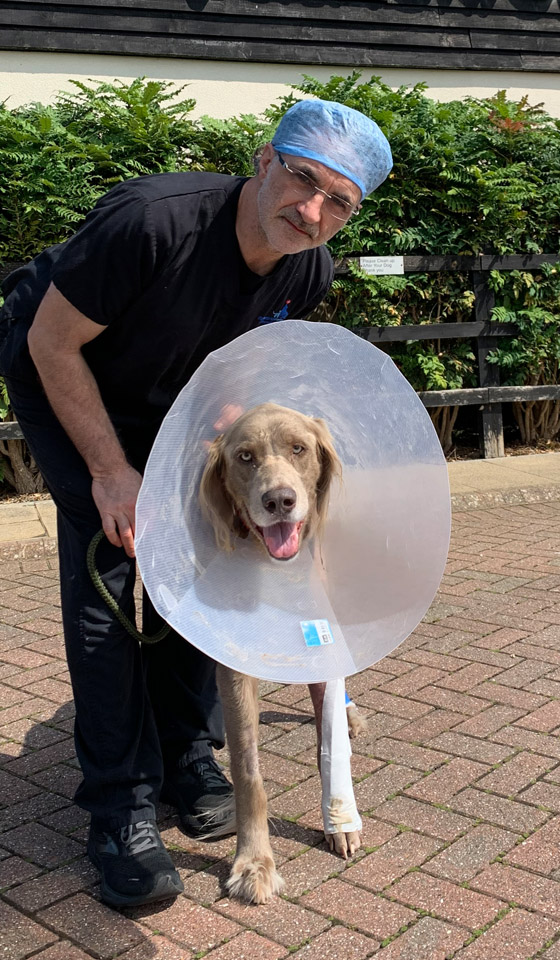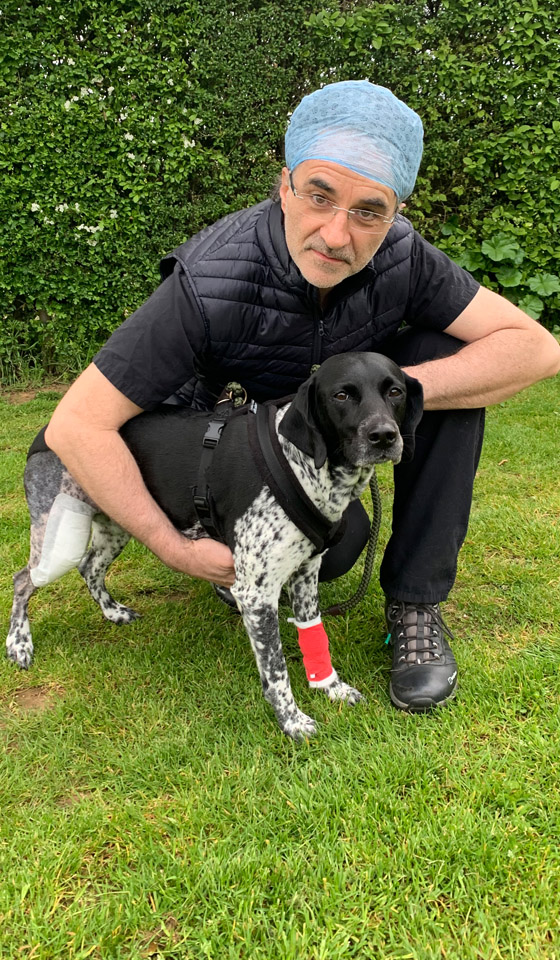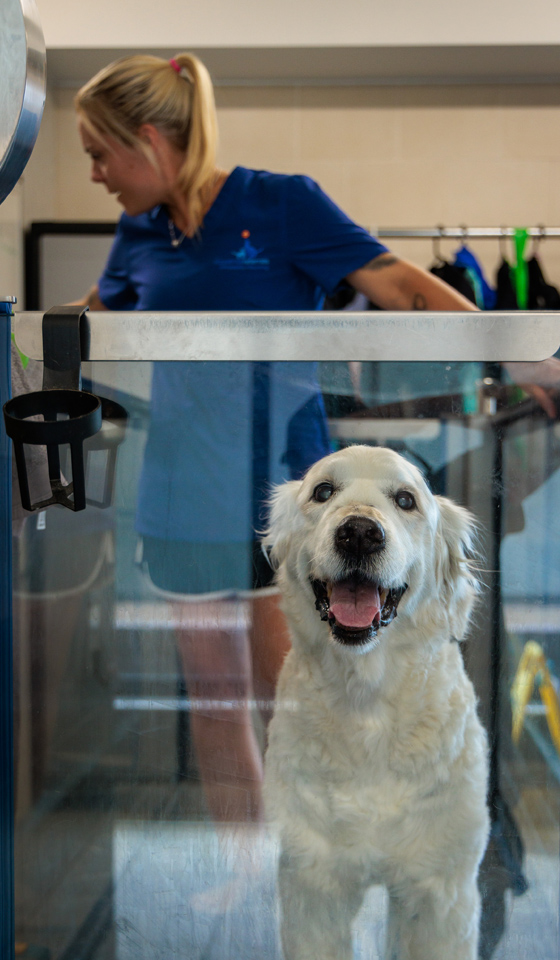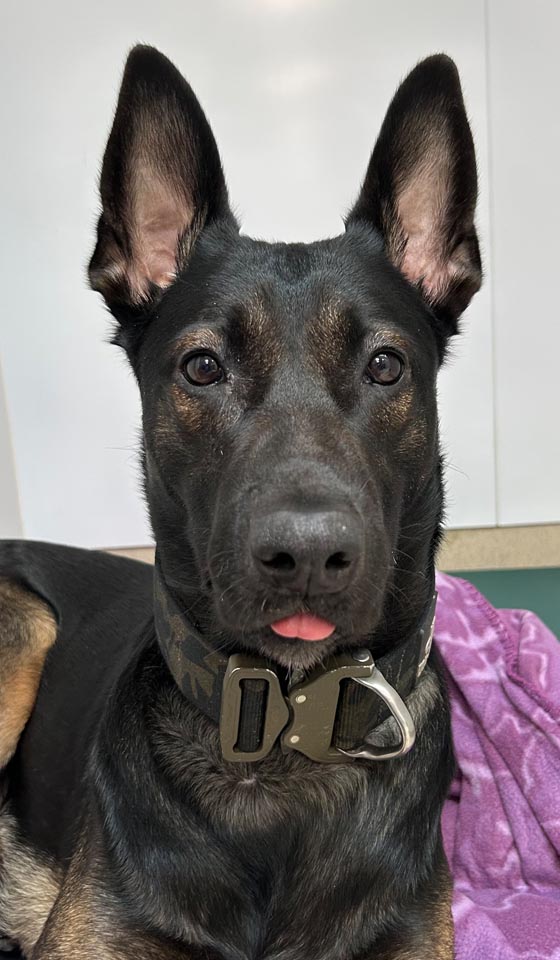What is canine degenerative myelopathy?
Canine degenerative myelopathy (DM) is characterised by a non-painful progressive hind limb paralysis in older dogs. Canine degenerative myelopathy (DM) was previously known as chronic degenerative radiculomyelopathy (CDRM) and is a progressive degenerative spinal cord disease. Ultimately it is a fatal disease with devastating consequences for the dogs and can be distressing for owners caring for them.
What causes degenerative myelopathy?
Degenerative myelopathy is associated with a genetic abnormality in dogs. The most common form is due to a genetic mutation in a gene coding for superoxide dismutase, a protein responsible for destroying free radicals in the body. Free radicals are part of the natural defence mechanism but become harmful when they are produced in excessive quantities causing cell death and a variety of degenerative diseases. The same gene mutation can also cause a form of motor neuron disease in humans.
Genetic testing is available through laboratories and breeding guidelines are available to identify dogs at risk of degenerative myelopathy. Test results identify dogs that are ‘clear’ i.e. the dog who is extremely unlikely to develop DM; those who are ‘carriers’ and are less likely to develop the disease and those who are ‘at risk’ of developing DM. It is important to understand this genetic test does NOT confirm degenerative myelopathy. In addition, some dogs that might be destined to develop the disease do not do so in their lifetime and pass away before getting degenerative myelopathy.
What breeds are affected by degenerative myelopathy?
Previously it was regarded as a disease of German Shepherds however in recent years the disease has been identified in many other breeds and is no longer considered a “large breed” problem. Degenerative myelopathy is a particular concern in Boxers, Pembroke and Cardigan Welsh Corgis, Wire Fox Terriers, Bernese Mountain Dogs, Borzoi, Cavalier King Charles Spaniels, Chesapeake Bay Retrievers, Golden Retriever, Great Pyrenean Mountain Dog, Kerry Blue Terriers, Poodle, Pug, Rhodesian Ridgeback, Shetland Sheepdog, Soft-Coated Wheaten Terriers and Nova Scotia Duck Tolling Retrievers. As the disease develops after the recommended breeding age, breeders of predisposed breeds should practice responsible breeding by genetic screening prior to mating to reduce the prevalence of the gene and of degenerative myelopathy.
More information on DNA testing for degenerative myelopathy is available through The Orthopaedic Foundation for Animals.
How can I tell if my dog has degenerative myelopathy?
Degenerative myelopathy usually affects dogs older than five years of age and typically older than eight years of age. Your dog may begin to show initial clinical signs such as a non-painful and subtle weakness of one hind limb. This can be misinterpreted as a chronic orthopaedic disease, for example in the hip or stifle (knee). The clinical signs can be mild and the onset insidious however signs progress over months leading to an ataxic i.e. ‘drunken sailor’ walk on the hind limbs and weakness. Your dog may also drag their paws, cross their hind limbs when walking and fall over when cornering.
Similar clinical signs can also be seen in other spinal cord or neurological diseases therefore it is important your dog has a comprehensive examination. During consultation with the neurology service a thorough history will be obtained from you in combination with findings from your primary care vet and a neurological examination will be performed which will provide vital information to the neurology clinician and enable them to begin further investigations such as blood tests, radiographs or Magnetic Resonance Imaging (MRI) through our advanced diagnostic imaging service.
What are the long-term consequences of degenerative myelopathy?
Unfortunately, degenerative myelopathy progresses to paralysis i.e. an inability for your dog to walk and support their own bodyweight. The progression of the disease results in further weakness, muscle atrophy and finally faecal and urinary incontinence. The disease may progress up the length of the spinal cord to eventually affect the forelimbs.
How is degenerative myelopathy diagnosed?
The suspected diagnosis of degenerative myelopathy is based on clinical signs, breed, and age and is supported by the absence of other clinical diseases.
Degenerative myelopathy is a diagnosis of exclusion, which means that other diseases with similar clinical signs have to be excluded by the neurologist first. A blood sample may be taken to rule out metabolic causes of spinal cord dysfunction for example cobalamin deficiency and also for genetic testing for the degenerative myelopathy associated genetic mutation. It is likely that advanced diagnostic imaging will be recommended and an MRI scan of the spinal cord will be performed by our advanced imaging team. A sample of cerebrospinal fluid (CSF), which surrounds the spinal cord, may also be obtained to allow analysis and exclusion of other disease processes. MRI and CSF analysis requires your dog to have a general anaesthetic. Your dog will have dedicated one-to-one care during their MRI scan by one of our nurses from the prep nursing team who are all trained and experienced in anaesthesia and sedation.
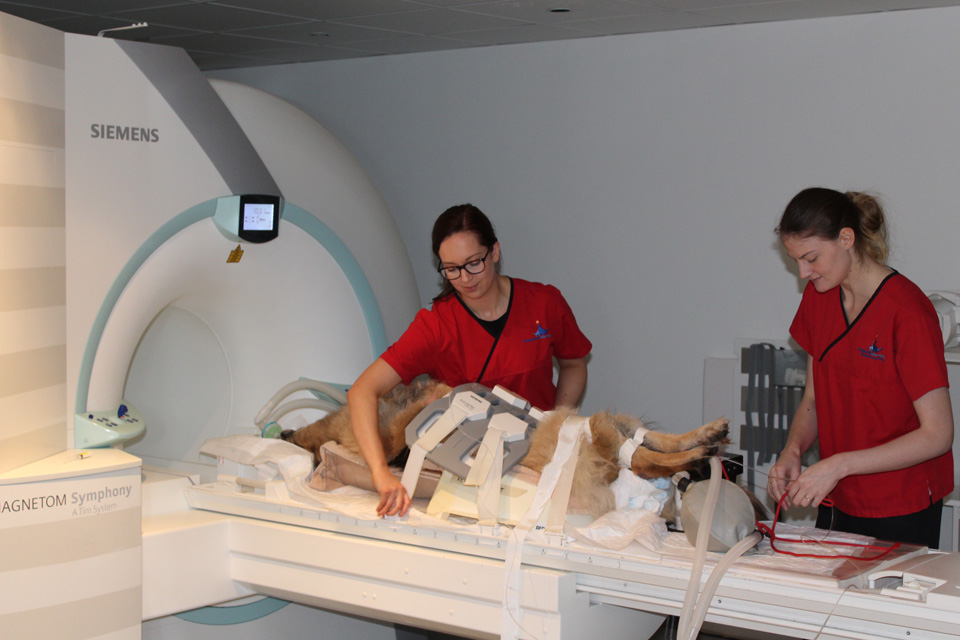
Older dogs may be affected by more than one disease process, for example, intervertebral disc disease, so the presence of other diseases does not exclude the presence of degenerative myelopathy and vice versa.
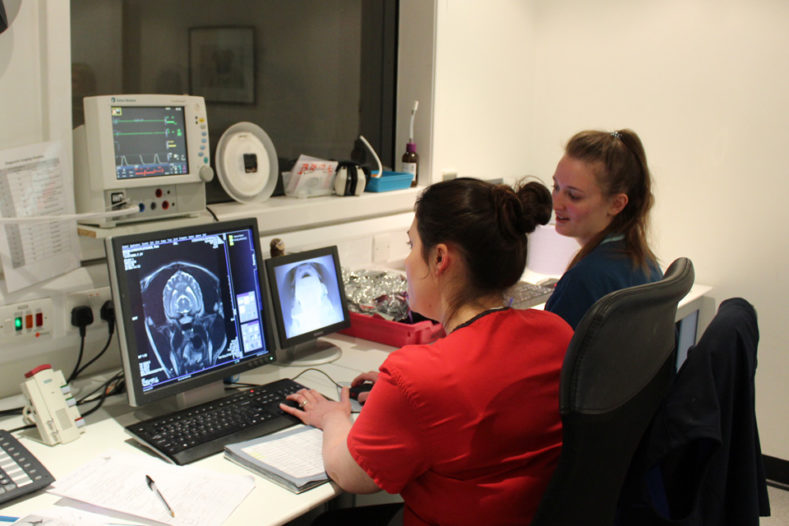
What are the treatment options for degenerative myelopathy?
Unfortunately, degenerative myelopathy is an irreversible and progressive disease. The prognosis is poor as no specific treatments are available although many dogs can be supported and maintain an acceptable quality of life for months to years. Progression of the disease will eventually result in the forelimbs being affected, although in some dogs this may take many years. Many owners choose a palliative care pathway before opting for euthanasia when their dogs are no longer able to walk using the hind limbs or stand and / or are urinary and faecally incontinent.
At Fitzpatrick Referrals we will provide you with a support team to include mobility slings and devices as well as physiotherapy and hydrotherapy all of which can be provided on an outpatient basis through our rehabilitation service. During your initial appointment, one of our chartered physiotherapists will assess your dog and design a programme specific for the rehabilitation of degenerative myelopathy and will also advise you of how often appointments are required.
6 minute read
In this article




